As a young up-and-coming amateur germanist, I was thrilled this week to stumble upon Christian Brandstätter Verlag's publishing programme, and more specifically Wien um 1900 | Kunst und Kultur – Fokus der europäischen Moderne (October 2005) and Berlin | Die 20er Jahre (September 2006). Lavishly illustrated and featuring authoratative essays, these two books brilliantly capture the spirit of these dual golden eras that the germanophone world enjoyed before it all went tits up in 1933.
Having been simultaneously published in both German and French (Éditions Hazan), English translations are now coming out in British (Thames & Hudson) and American (Vendome Press) editions. My German skills are not where I would like them to be, so I've picked up the American edition of the Vienna book and the French edition of the Berlin book, and I am loving them. Thank goodness for Canada, where you can easily buy a French edition of a German book if no English publisher has yet got around to translating it. Wien um 1900 | Kunst und Kultur – Fokus der europäischen Moderne
Wien um 1900 | Kunst und Kultur – Fokus der europäischen Moderne
Vienne fin de siècle (FR)
Vienna 1900 and the Heroes of Modernism (UK)
Vienna 1900: Art, Life, & Culture (US)
Christian Brandstätter, General Editor
With texts by: Hans Bisanz; Marian Bisanz-Prakken; Monika Faber; Peter Gorsen; Daniela Gregori; Hanel Koeck; Richard Kurdiovsky; Rainer Metzger; and Käthe Springer.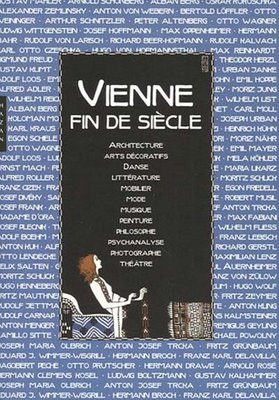 From the French publisher:
From the French publisher:Creuset de seize différentes nations réunies par l'Empire austro-hongrois finissant, Vienne «fin de siècle» a tout à la fois incarné et symbolisé le mythe et l'inextricable imbroglio de cet édifice orgueilleux sur le déclin en 1900. Le paradoxe a voulu que cette ville, synonyme d'apocalypse, à la veille d'être effacée comme capitale impériale par la Première Guerre mondiale, ait dans le vertige de sa chute su définir quelques-uns des axes de la modernité qui ont conditionné tout le XXe siècle. Tel un chant du cygne, l'extraordinaire épanouissement culturel que connaît Vienne alors concerne aussi bien les arts plastiques (avec la Sécession de Gustav Klimt, avec Egon Schiele, Oskar Kokoschka, etc.), l'architecture (avec Otto Wagner, Joseph Hoffmnn, Adolf Loos, Joseph Maria Olbrich), la musique (avec Hugo Wolf, Gustav Malder, Arnold Schönberg, Alban Berg, Anton . Webern), la littérature (avec Hugo von Hofmannsthal, Karl Kraus, Arthur Schnitzler), la naissance de la psychanalyse (avec Sigmund Freud, Viktor Adler, Wilhelm Reich) ou de nouvelles interrogations philosophiques sur le langage et les images (avec Fritz Mauthner et Ludwig , Wittgenstein). La présente encyclopédie visuelle restitue ces fortes personnalités à travers leurs ouvrages, et les archives photographiques qui ont été conservées, mais aussi les cercles, les groupes, les revues (tel Ver Sacrum), les cafés littéraires, où ce monde culturel se réunissait, le tout commenté dans le détail par les conservateurs et historiens spécialistes de chacune des disciplines.
Publication Date: October 2005
ISBN 2754100415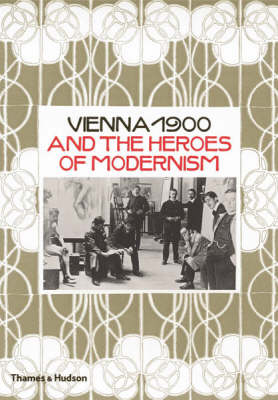 From the British publisher:
From the British publisher:Fin-de-siècle Vienna was the central gathering point of the European avant-garde and an extraordinary laboratory for new ideas and concepts.
Here is a dazzlingly illustrated (with over 700 illustrations) portrait of this astonishing cultural ferment and its most important protagonists. The contributors discuss Klimt and the artists and architects – among them Oskar Kokoschka, Egon Schiele, Josef Hoffmann and Adolf Loos – who joined him in the ‘Secession’, and reflect on the glories of the Wiener Werkstätte’s crafts, prints, graphic art and fine book production.
Themes range from the compositional logic of such musical pioneers as Hugh Wolf, Gustav Mahler, Arnold Schönberg, Alan Berg and Anton Webern to the literary and journalistic life of the Café Griensteidl, the favourite haunt of such luminaries as Hugo von Hofmannsthal, Richard Beer-Hofmann, Hermann Bahr, Peter Altenberg and Karl Kraus.
Further figures integral to the mix include Theodor Herzl, the founder of Zionism; the dramatist Arthur Schnitzler and his one-act diagnoses of the morbidly cyclical nature of washed-out emotion; Sigmund Freud, Alfred Adler and Wilhelm Reich with their masterly insights into the human psyche; and Fritz Mauthner and Ludwig Wittgenstein, pioneers in the philosophy of language.
The book includes a compact but detailed appendix that offers information on the significant figures, institutions and publications of this remarkable period.
Publication Date: August 2006
ISBN 0500513139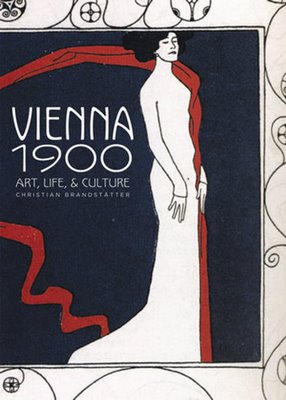 From the American Publisher:
From the American Publisher:At the turn of the 20th century, Vienna was one of the most exciting cities on earth--the central gathering spot of the European avant-garde in art, architecture, literature, music, journalism, philosophy, psychiatry, and theater. The dynamic cross-pollination among the revolutionary figures involved--Klimt, Kokoschka, the Wiener Werkstätte, Mahler, Freud, Wittgenstein, and many more--turned the Austrian capital into an extraordinary laboratory for new ideas and concepts. It is where modern was born.
With more than 500 illustrations, Vienna 1900 is a unique, concise portrait of a vibrant world and its most important protagonists.
Publication Date: October 2006
ISBN 0865651752
Sample pages: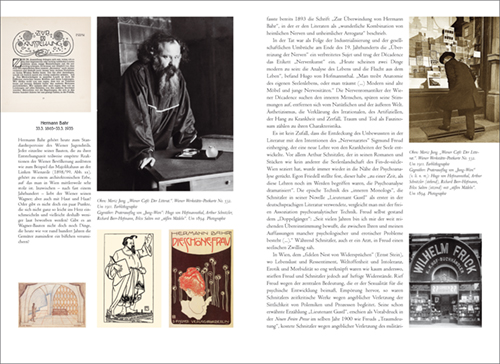
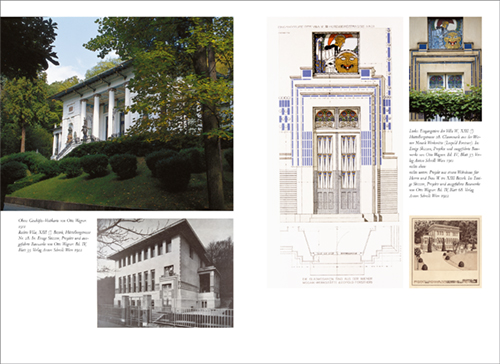
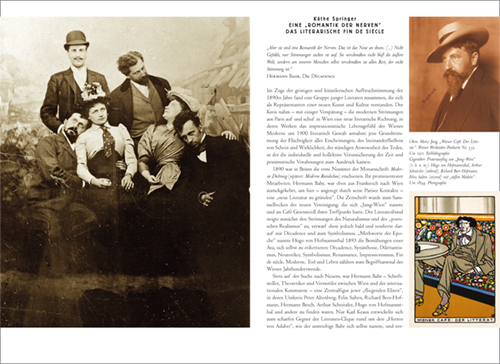
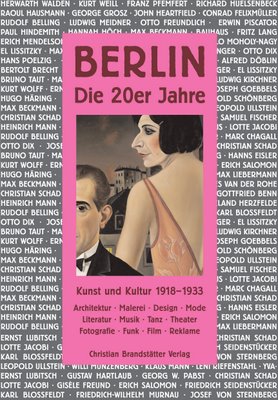 Berlin | Die 20er Jahre
Berlin | Die 20er Jahre
Berlin : les années vingt (FR)
Berlin in the Twenties (UK)
Berlin: The Twenties (US)
Rainer Metzger, General Editor
Table of Contents (from the British edition):
1. The City as Parvenu; 2. The November Vanishing Point: Revolution and Reaction; 3. War and Peace: Expressionism and Dada; 4. The Aesthetics of Truth; 5. Unity and Purity: Utopias, Collectives, Futurism; 6. The Modern Metropolis; 7. High Culture; 8. The Truth in Flight: Berlin and the Alternative Modernity; 9. The Argument of the Masses; 10. The Third Reich or: How Was It Possible?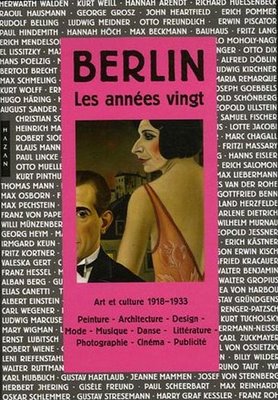 From the French publisher:
From the French publisher:C'est la République de Weimar au cours des années 1918 à 1933 qui propulsa Berlin au zénith. Ainsi, le
Berlin des années vingt a donné naissance à une culture qui a totalement vécu de la politisation. Il y germait des utopies qui, en cette époque de crise, traçaient des perspectives de progrès. La communication prenait son essor dans les sphères populaires par le biais de la photo, du cinéma, des affiches, de l'agit-prop, du cabaret et des variétés. Grâce à ces techniques, ces millions de Berlinois ne formaient plus une masse mais des citoyens : ils acquéraient à la fois un accès et une dignité à la culture. Ces évolutions venaient de la masse, mais il y avait une avant-garde pour les faire entrer dans les pratiques et les prémices des beaux-arts. Il suffit d'aligner quelques noms, George Grosz, Otto Dix, Raoul Hausmann, John Heartfield, Hannah Höch pour l'aventure Dada ; Fritz Lang, Ernst Lubitsch pour le cinéma et la photographie ; Mies van der Rohe, Moholy-Nagy, Lissitzky pour les grandes conquêtes utopistes ou fonctionnelles de l'architecture, du design et de l'œuvre d'art totale, pour prendre la mesure de ces années de révolutions et de créations tous azimuts.
Publication Date: October 2006
ISBN 2754101128 From the American Publisher:
From the American Publisher:Berlin, a haunting vision of the twentieth century’s first modern city, is a cultural history filled with 400 shockingly fresh and romantic photographs, paintings, and other images.
In the brief years between the twentieth century’s two cataclysmic world wars, the modern metropolis was invented in Berlin. Life in Berlin was a cabaret, and Marlene Dietrich, Thomas Mann, Alfred Einstein, or Joseph Goebbels might be seated at the next table. The avant-garde thrived there. The mass media magnified the impact of everything from fads to political ideas. Subcultures and club cultures nurtured gender-bending fashions and lifestyles. Architects and designers struggled to free themselves from the past. In the background beat the new rhythms of urban experience: the coming and going of the latest planes and trains and automobiles, the clacking of typewriters in vast offices, the jazz band that never sleeps. Berlin: The Twenties is a book for history buffs, travelers, and lovers of modern art and design.
Publication Date: May 2007
ISBN 0810993295 From the British publisher:
From the British publisher:Berlin in the 1920s was home to some of the most extraordinary minds of modern times, and was a vigorous melting pot of radical new ideas and concepts in every field. There was a massive boom in popular artforms, including photography and cinema, graphic design and poster art, agitprop and cabaret, which gave all the people of the city a chance to enter the cultural arena. Comprising essays on the key movements and figures of the era, this profusely illustrated book is a highly readable portrait of this astonishing cultural ferment and its most important protagonists.
Publication Date: April 2007
ISBN 0500513546
Sample pages: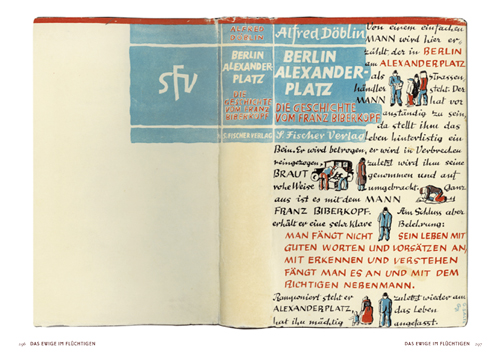



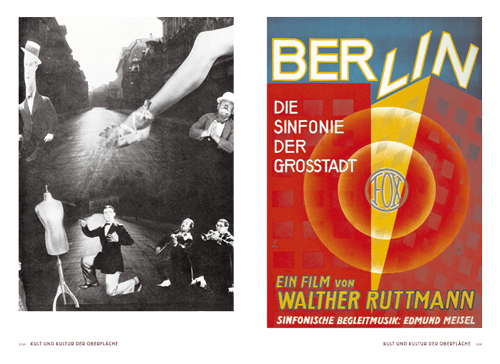
15 December 2006
Early Twentieth Century German Culture
Tags:
Bookshelf,
Europa,
Germanistik
Subscribe to:
Post Comments (Atom)








1 comments:
these are wonderful--thanks!!
Post a Comment